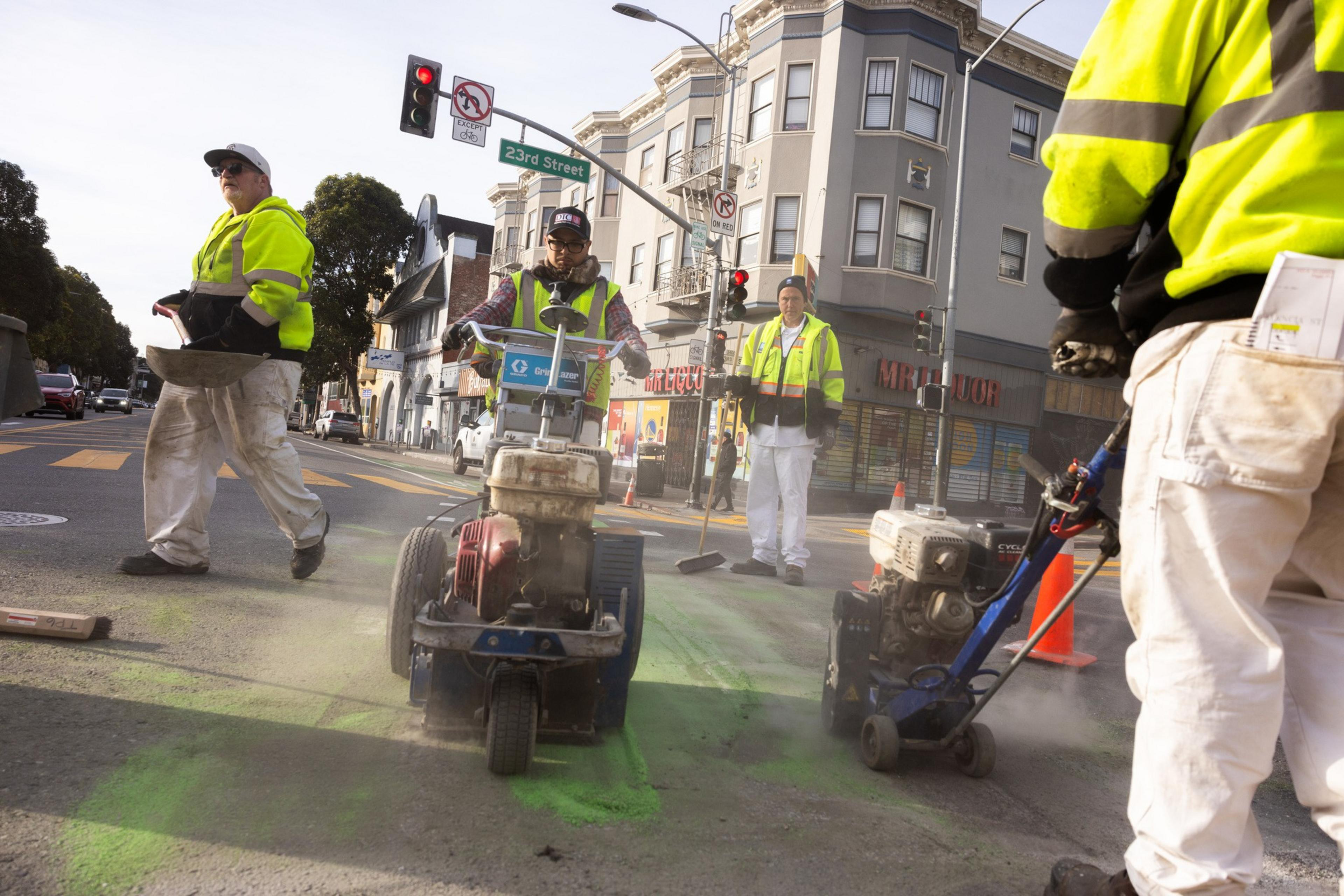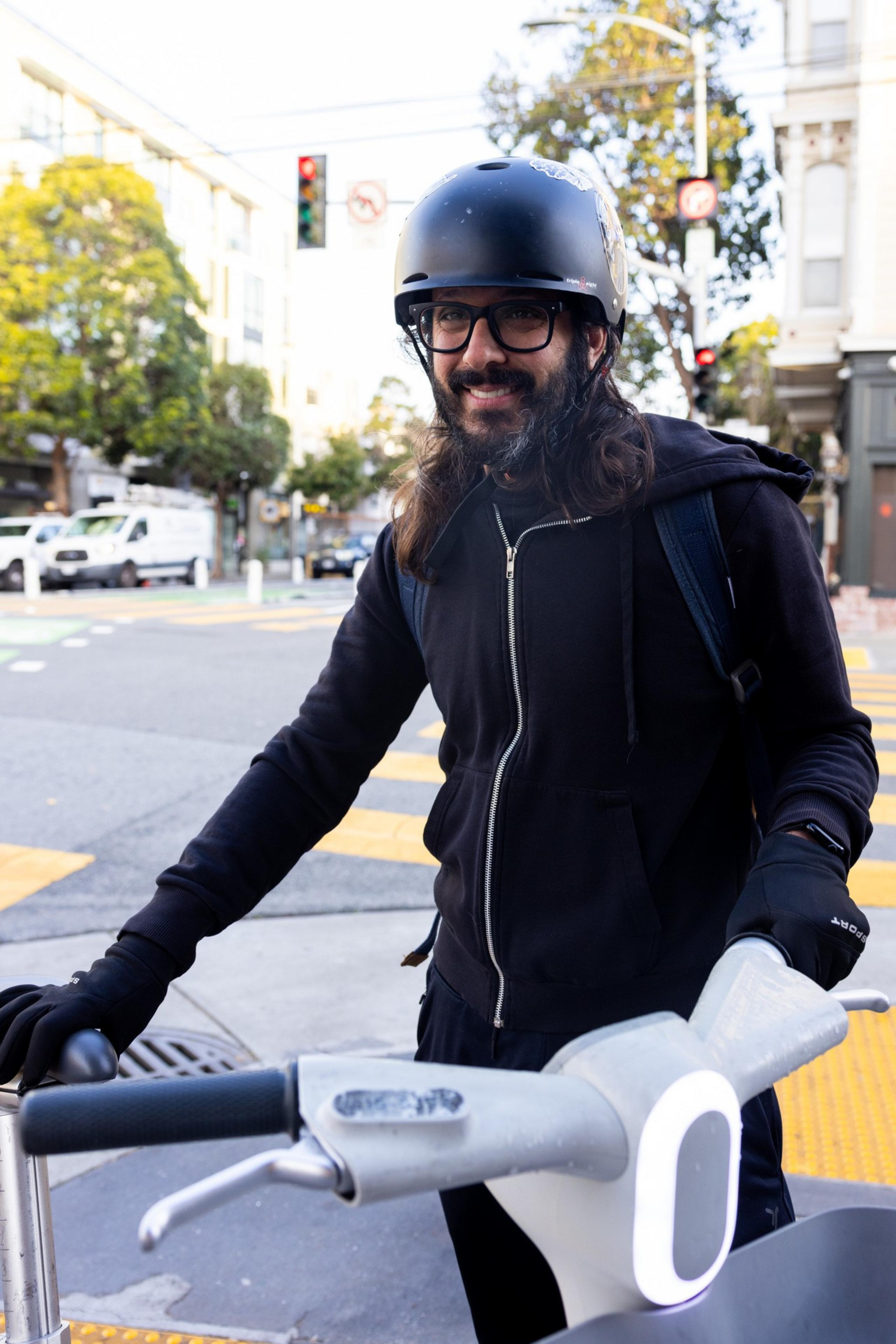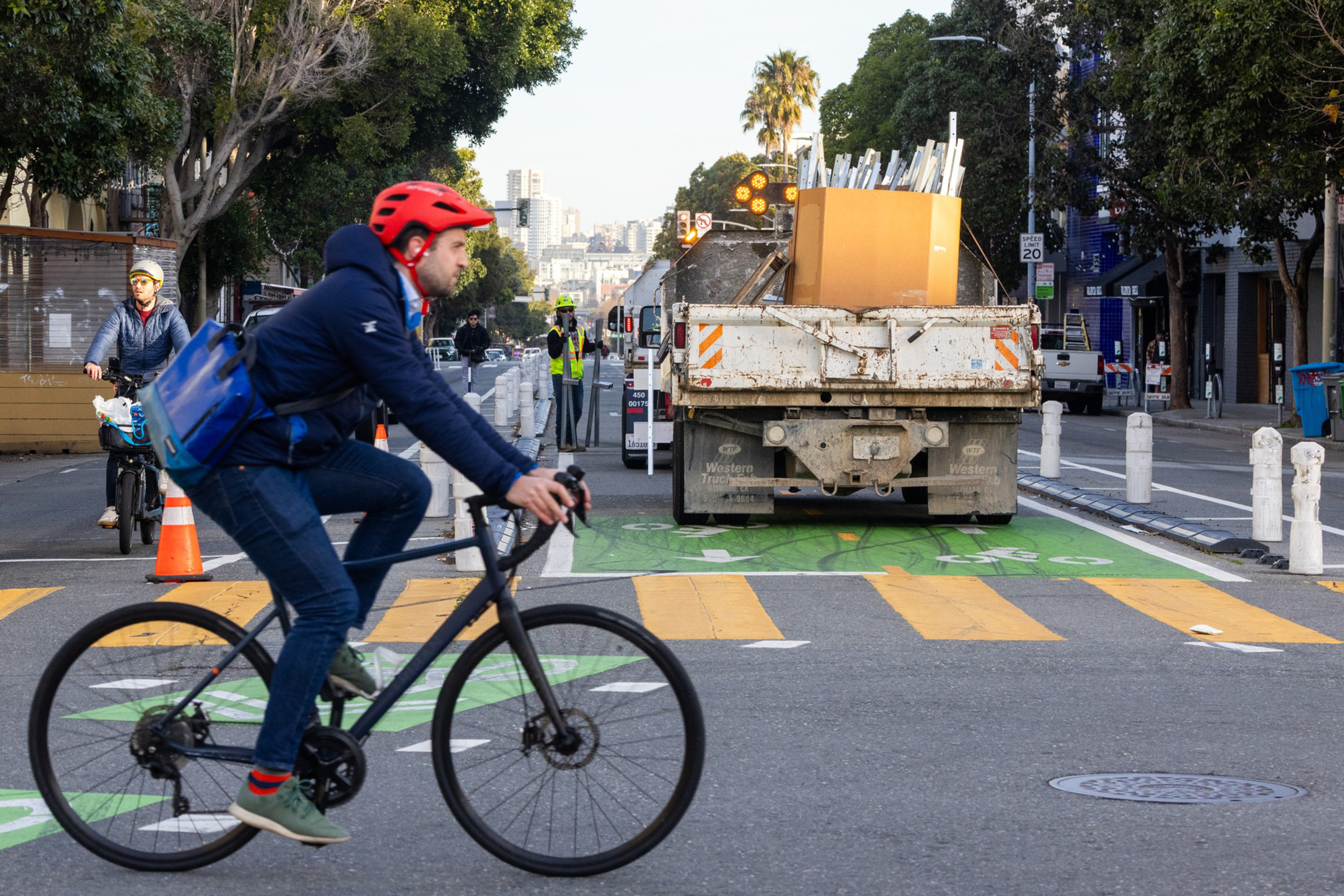The era of the controversial Valencia Street center bike lane is officially over. Crews from the San Francisco Municipal Transportation Agency on Tuesday began dismantling the eight-block-long bike lane that had been the source of much loathing, cited by numerous businesses as the reason for their failure.
The crews will move north on Valencia from 23rd to 15th streets over two to three months, replacing the center lane with a protected side-running bike lane (opens in new tab). The timing of the transition will depend on weather conditions, according to an SFMTA spokesperson.
The new design, approved in June, will essentially revert the bike lane to its pre-2023 position, only with more protective barriers. The other major change is the addition of “floating” restaurant parklets and parking spaces that sit a few feet out from the sidewalk, allowing bikes to pass between them and the curb.
The SFMTA has promised the project won’t be noisy or disruptive (opens in new tab), but whether the outcome will prove popular — or even workable — remains to be seen.

From the day it was announced, the bike lane ignited a firestorm of controversy, largely pitting cyclists against drivers and business owners on Valencia Street. On Tuesday morning, as crews began dismantling it, The Standard spoke with nearly a dozen commuters, neighbors, and passersby, and found that opinions remain sharply divided — and just as strongly held.
Constance Frey, a therapist who lives on nearby Shotwell Street, was not pleased to see the center lane go away. “It has been fabulous to have put this in the middle,” she said. “I feel much safer riding there than I do on the side. It has increased my usage of my bike and of feeling comfortable in the city.”

Other cyclists said merchants’ concerns were overblown. “I feel mostly annoyed that businesses are complaining about the five parking spots that they’ve lost,” said Joanne Tang, a city employee. “I would really just like Valencia to be a car-free corridor.”
However, others felt the implementation of the center lane was fundamentally mismanaged. “I think they did a poor job in the first place,” said Jeremy Bataillou, a designer. “I wish it was done in a better way.”

Some cyclists agreed.
“I think it was one of those things where no one had a better solution, and something was proposed, so they went with it,” said software engineer Harley Cooper. “The use of these plastic bollards is kind of useless. … I’ve nearly been hit on multiple occasions.”

As work crews erected barriers, forcing the morning’s bike commuters into the car lanes, one neighbor said she looked forward to the restoration of the side-running lanes, which were in place for more than 20 years. “I haven’t tried [the center lane],” said Paula Bosque, an analyst for the city and a neighborhood resident. “I kind of have a fear of bicycles because of a bike accident one time. But when it was along the side, I tried it — and it felt safe to ride my bike for the first time ever.”
The center-running lane, which ran through the commercial corridor between 15th and 23rd streets in the Mission, was one of the SFMTA’s most controversial projects, all but ripping the neighborhood apart when it was installed in late 2023, at the expense of several dozen parking spaces.

Although a report found no economic harm to neighborhood businesses, the backlash intensified throughout 2024. Pink-and-white signs decrying the bike lane’s supposed business-killing effects appeared in the windows of Amado’s, Blondie’s, and other bars and restaurants. Dissatisfied with the SFMTA’s plans to revert to the side-running bike lane, a splinter group of irate merchants broke away from the Valencia Street Merchants Association, insisting that there be no bike lane at all. One Mission restaurateur was so opposed to the center lane he went on a month-long hunger strike (opens in new tab).
By the middle of spring, bike traffic will flow along the sides of Valencia Street once again, with plastic bollards shielding cyclists from vehicular traffic. But the number of parking and loading spaces (opens in new tab) on the eight-block section of the street — the reason for much of the outrage — will be reduced by a further 35%, from 225 to 146.
Jillian D’Onfro contributed additional reporting.
